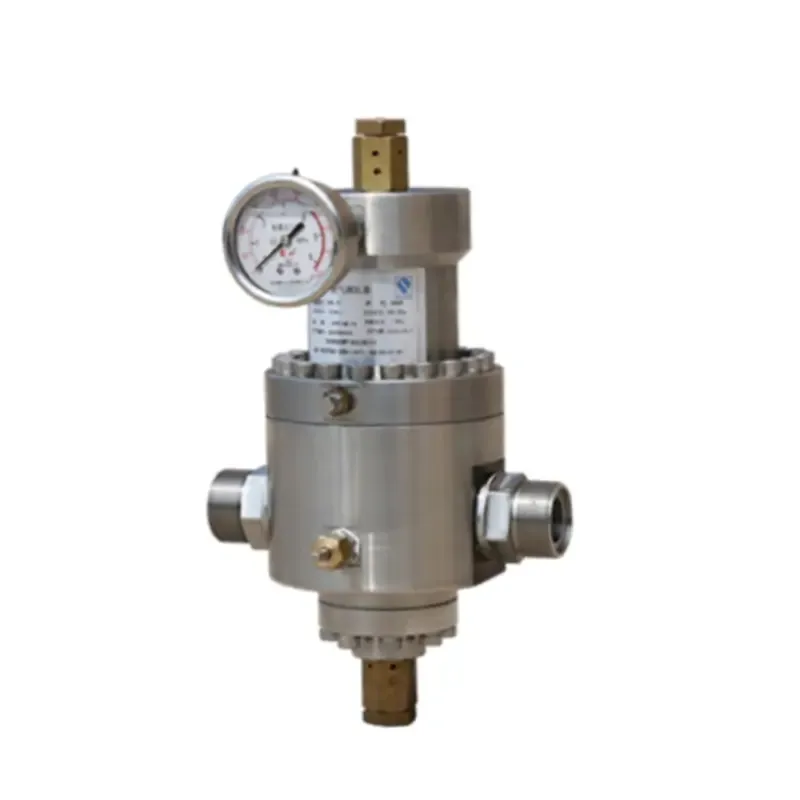
Nov . 17, 2024 05:48
Back to list
Design and Optimization of a Pressure Reduction Skid for Industrial Applications
Pressure Reduction Skid An Essential Component in Fluid Handling Systems
In the world of industrial processes, managing fluid dynamics while ensuring safety and efficiency is paramount. Among various equipment used for this purpose, a pressure reduction skid plays a crucial role. This specialized skid-mounted system is designed to reduce the high pressure of fluids from pipelines to a lower, more manageable level, thereby ensuring the safe and efficient handling of liquids and gases in various applications.
Understanding the Purpose of a Pressure Reduction Skid
Pressure reduction skids are vital in industries such as oil and gas, chemical manufacturing, water treatment, and many others. When fluids travel through pipelines, they often experience high pressure due to various factors like deep well extraction or pump systems. In many processes, operating at such high pressures is not only inefficient but can also pose significant safety risks. This is where pressure reduction skids come into play.
These systems typically include pressure regulators, valves, and metering devices housed within a robust frame or skid. By reducing pressure, these skids help protect downstream equipment, balance flow rates, and maintain system integrity. For instance, in a chemical processing facility, maintaining a specific pressure is critical for chemical reactions to proceed safely and efficiently. A pressure reduction skid ensures that operators can achieve this without risking equipment failure or safety hazards.
Key Components of a Pressure Reduction Skid
A typical pressure reduction skid consists of several key components. The primary element is the pressure regulator, which is responsible for managing and reducing the incoming pressure to the desired levels. Additionally, there are safety valves, which act as a safeguard against overpressure scenarios, ensuring that the system operates within safe limits. Flow meters are also included to monitor the volume of fluid passing through the skid, allowing operators to manage flow rates effectively.
pressure reduction skid

The design of the skid itself is crucial. It needs to be constructed from materials compatible with the fluids being handled, whether they are corrosive, viscous, or contain particulates. Skids are often pre-assembled and tested at a manufacturing facility, ensuring that they can be installed quickly and efficiently on-site, reducing downtime in operational environments.
Benefits of Using Pressure Reduction Skids
One of the main advantages of pressure reduction skids is their ability to enhance safety. By managing pressure levels, these systems significantly reduce the risk of accidents related to overpressure. Moreover, they contribute to improved process efficiency. With better control over pressure and flow rates, industries can achieve optimal performance, reducing waste and improving product quality.
Additionally, pressure reduction skids offer flexibility in operation. They can be custom-designed to meet specific requirements of various industries, making them suitable for a wide range of applications. This adaptability is particularly beneficial in environments where fluid characteristics may change frequently.
Conclusion
In summary, pressure reduction skids are indispensable in modern industrial fluid handling systems. By providing efficient pressure management and ensuring safety, these skids play a vital role in the operation of many processes. As industries continue to evolve, the importance of such systems will only grow, emphasizing the need for innovative solutions like pressure reduction skids in maintaining operational excellence.
Latest news
-
Safety Valve Spring-Loaded Design Overpressure ProtectionNewsJul.25,2025
-
Precision Voltage Regulator AC5 Accuracy Grade PerformanceNewsJul.25,2025
-
Natural Gas Pressure Regulating Skid Industrial Pipeline ApplicationsNewsJul.25,2025
-
Natural Gas Filter Stainless Steel Mesh Element DesignNewsJul.25,2025
-
Gas Pressure Regulator Valve Direct-Acting Spring-Loaded DesignNewsJul.25,2025
-
Decompression Equipment Multi-Stage Heat Exchange System DesignNewsJul.25,2025

